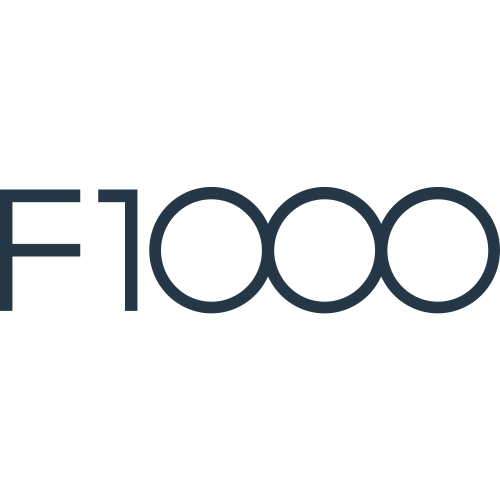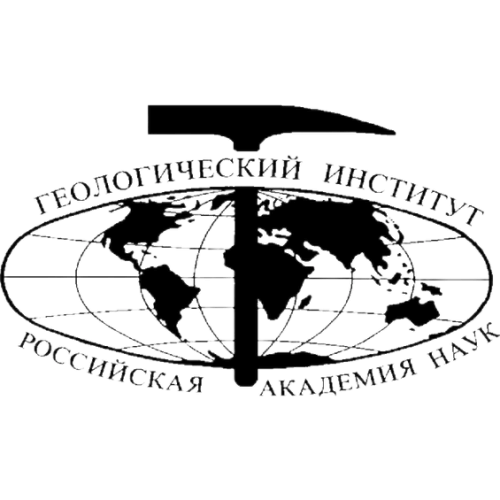Vladislav Dmitryevich Desiatkin
Publications
5
Citations
35
h-index
3
Found
Nothing found, try to update filter.
Found
Nothing found, try to update filter.
Found
Nothing found, try to update filter.
Total publications
5
Total citations
35
Citations per publication
7
Average publications per year
1.25
Average coauthors
5.8
Publications years
2021-2024 (4 years)
h-index
3
i10-index
2
m-index
0.75
o-index
7
g-index
5
w-index
1
Metrics description
h-index
A scientist has an h-index if h of his N publications are cited at least h times each, while the remaining (N - h) publications are cited no more than h times each.
i10-index
The number of the author's publications that received at least 10 links each.
m-index
The researcher's m-index is numerically equal to the ratio of his h-index to the number of years that have passed since the first publication.
o-index
The geometric mean of the h-index and the number of citations of the most cited article of the scientist.
g-index
For a given set of articles, sorted in descending order of the number of citations that these articles received, the g-index is the largest number such that the g most cited articles received (in total) at least g2 citations.
w-index
If w articles of a researcher have at least 10w citations each and other publications are less than 10(w+1) citations, then the researcher's w-index is equal to w.
Top-100
Fields of science
|
1
2
|
|
|
Earth and Planetary Sciences (miscellaneous)
|
Earth and Planetary Sciences (miscellaneous), 2, 40%
Earth and Planetary Sciences (miscellaneous)
2 publications, 40%
|
|
General Earth and Planetary Sciences
|
General Earth and Planetary Sciences, 2, 40%
General Earth and Planetary Sciences
2 publications, 40%
|
|
Geology
|
Geology, 1, 20%
Geology
1 publication, 20%
|
|
1
2
|
Journals
|
1
2
3
4
|
|
|
Doklady Earth Sciences
4 publications, 80%
|
|
|
Geological Magazine
1 publication, 20%
|
|
|
1
2
3
4
|
Citing journals
|
2
4
6
8
10
|
|
|
Doklady Earth Sciences
10 citations, 28.57%
|
|
|
Gondwana Research
6 citations, 17.14%
|
|
|
Open Research Europe
4 citations, 11.43%
|
|
|
Precambrian Research
3 citations, 8.57%
|
|
|
Geological Magazine
2 citations, 5.71%
|
|
|
LITHOSPHERE (Russia)
2 citations, 5.71%
|
|
|
Доклады РОССИЙСКОЙ АКАДЕМИИ НАУК. Науки о Земле
2 citations, 5.71%
|
|
|
Fossils and Strata
2 citations, 5.71%
|
|
|
Palaeogeography, Palaeoclimatology, Palaeoecology
1 citation, 2.86%
|
|
|
Facies
1 citation, 2.86%
|
|
|
Russian Geology and Geophysics
1 citation, 2.86%
|
|
|
Vestnik of Geosciences
1 citation, 2.86%
|
|
|
2
4
6
8
10
|
Publishers
|
1
2
3
4
|
|
|
Pleiades Publishing
4 publications, 80%
|
|
|
Cambridge University Press
1 publication, 20%
|
|
|
1
2
3
4
|
Organizations from articles
|
1
2
3
4
5
|
|
|
Geological Institute of the Russian Academy of Sciences
5 publications, 100%
|
|
|
Schmidt Institute of Physics of the Earth of the Russian Academy of Sciences
4 publications, 80%
|
|
|
Institute of the Earth’s Crust of the Siberian Branch of the Russian Academy of Sciences
2 publications, 40%
|
|
|
Lomonosov Moscow State University
1 publication, 20%
|
|
|
1
2
3
4
5
|
Countries from articles
|
1
2
3
4
5
|
|
|
Russia
|
Russia, 5, 100%
Russia
5 publications, 100%
|
|
1
2
3
4
5
|
Citing organizations
|
2
4
6
8
10
12
|
|
|
Geological Institute of the Russian Academy of Sciences
12 citations, 34.29%
|
|
|
Schmidt Institute of Physics of the Earth of the Russian Academy of Sciences
5 citations, 14.29%
|
|
|
Trofimuk Institute of Petroleum Geology and Geophysics of the Siberian Branch of the Russian Academy of Sciences
3 citations, 8.57%
|
|
|
University of Göttingen
3 citations, 8.57%
|
|
|
Organization not defined
|
Organization not defined, 2, 5.71%
Organization not defined
2 citations, 5.71%
|
|
Novosibirsk State University
2 citations, 5.71%
|
|
|
Uppsala University
2 citations, 5.71%
|
|
|
Durham University
2 citations, 5.71%
|
|
|
UiT The Arctic University of Norway
2 citations, 5.71%
|
|
|
University of Cape Town
2 citations, 5.71%
|
|
|
Freiberg University of Mining and Technology
2 citations, 5.71%
|
|
|
University of Extremadura
2 citations, 5.71%
|
|
|
Lomonosov Moscow State University
1 citation, 2.86%
|
|
|
Institute of the Earth’s Crust of the Siberian Branch of the Russian Academy of Sciences
1 citation, 2.86%
|
|
|
Zavaritsky Institute of Geology and Geochemistry of the Ural Branch of the Russian Academy of Sciences
1 citation, 2.86%
|
|
|
Komi Science Center of the Ural Branch of the Russian Academy of Sciences
1 citation, 2.86%
|
|
|
Sultan Qaboos University
1 citation, 2.86%
|
|
|
University of Oslo
1 citation, 2.86%
|
|
|
University of Edinburgh
1 citation, 2.86%
|
|
|
University of California, Santa Barbara
1 citation, 2.86%
|
|
|
McGill University
1 citation, 2.86%
|
|
|
University of Oviedo
1 citation, 2.86%
|
|
|
University of Namibia
1 citation, 2.86%
|
|
|
2
4
6
8
10
12
|
Citing countries
|
2
4
6
8
10
12
14
16
|
|
|
Russia
|
Russia, 16, 45.71%
Russia
16 citations, 45.71%
|
|
Country not defined
|
Country not defined, 5, 14.29%
Country not defined
5 citations, 14.29%
|
|
Germany
|
Germany, 3, 8.57%
Germany
3 citations, 8.57%
|
|
United Kingdom
|
United Kingdom, 3, 8.57%
United Kingdom
3 citations, 8.57%
|
|
Spain
|
Spain, 3, 8.57%
Spain
3 citations, 8.57%
|
|
Norway
|
Norway, 3, 8.57%
Norway
3 citations, 8.57%
|
|
Sweden
|
Sweden, 2, 5.71%
Sweden
2 citations, 5.71%
|
|
South Africa
|
South Africa, 2, 5.71%
South Africa
2 citations, 5.71%
|
|
USA
|
USA, 1, 2.86%
USA
1 citation, 2.86%
|
|
Canada
|
Canada, 1, 2.86%
Canada
1 citation, 2.86%
|
|
Namibia
|
Namibia, 1, 2.86%
Namibia
1 citation, 2.86%
|
|
Oman
|
Oman, 1, 2.86%
Oman
1 citation, 2.86%
|
|
2
4
6
8
10
12
14
16
|
- We do not take into account publications without a DOI.
- Statistics recalculated daily.
This section displays the profiles of scientists registered on the platform. To display the full list, invite your colleagues to register.






































